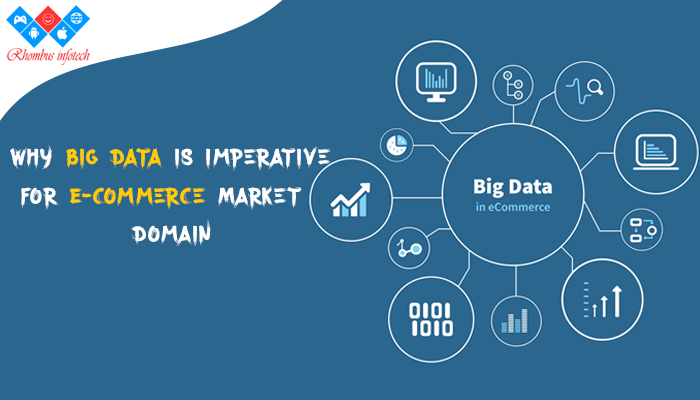The use of Big Data and analytics is helping e-commerce business stay one step ahead of the game. Big Data is a large collection of information that organizations can use to determine which product, price and advertising is best to maximize their profits.
The business landscape has transformed over the years, with data-driven decisions becoming the need of the hour. Without any doubt, Big Data is becoming big deal today. And the fact that data is available in massive volumes (thanks to the internet and social media) today makes it even more powerful and challenging at the same time. There is a lot that data can disclose about the customers, products, competitors, markets, and the industry as a whole. Big Data Analytics is being embraced widely to get actionable insights that drive growth-generating decisions for businesses.
Businesses across all domains have started recognizing Big Data as a technology that opens new frontiers for them and e-commerce is no exception. In fact, the match between e-commerce and Big Data is like one that is made in heaven because it makes things crystal clear for the merchants, considering the lack of direct connectivity with the buyer. If you are still considering the adoption of the technology for your e-commerce store, you should do it sooner rather than later. Here are some ways in which this technology can serve as a growth engine you can depend on.
Know your customer better
The first step of selling successfully is to build a buyer persona because you will need to understand who your customers are and what they expect from your products and services. With Big Data Analytics Solutions in place, merchants can get a genuine picture of the customer behavior through an accurate analysis of their browsing behavior and shopping patterns. It becomes easy to comprehend their inclination towards specific products, categories, and brands by tracking their touch points and the website areas they access repeatedly and spends maximum time on. Also, you can get to know where you need to improve by identifying gaps and trends towards cart abandonment.
Deliver better shopping experiences
Without any doubt, knowing your customer better empowers you to deliver better shopping experiences. A Big Data Analytics tool enables to gather and analyze voluminous data from disparate sources including website analytics, social media data, email marketing, and more for a comprehensive analysis. Knowing what works and what does not across all the points of customer interaction gets you on top when it comes to polishing the shopping experiences for your buyers. The best way would be to tweak your processes, products, and content to align with the buyer expectations.
Improve the level of customer service
Another way in which Big Data Analytics can enhance e-commerce businesses is by helping them improve customer service. In the first place, it is crucial to understand the significance of customer service for boosting your sales. Even if you invest all the best efforts in e-commerce web development and come up with an impressive product catalog, you will be unable to achieve your targets unless you deliver excellence in customer services. Data analysis gets you the knowledge about the gaps in your product quality and service delivery; so you know how you can serve the shoppers to an extent that they have no complaints and come back for more.
Forecast Demand
Almost every business performs demand forecasting in some capacity. For example, if you’re a restaurant owner, you will need to forecast how many customers you’ll have in tomorrow and what meals they’ll order so you know which ingredients to purchase and how many chefs to have in the kitchen. If you sell shirts online, then you’ll need to predict in advance how many shirts of each color you’ll need to order from your manufacturer.
Typically, business owners will forecast demand through their gut-feeling (“people will order pancakes than waffles”) or a rule of thumb (“stock more snowman t-shirts around Christmas time”). The issue with gut-feel or rules of thumb is that they’re not quantitative. If you have enough historical data, you can make accurate forecasts.
Ease and security of online payments
Online payments are a key aspect of selling through e-commerce. While you must offer diverse payment options for the shoppers, there should also be the assurance that their transactions and financial details are secure through the process. By analyzing the payments’ data, the store can understand the behavior of the users to find out the most popular payment methods that they must integrate into their e-commerce store for maximizing sales. Further, these insights also helps them to distinguish genuine users from fraudsters, which can be of key importance for preventing online frauds and building trust for the store.
Pricing
Pricing can be changed constantly to keep up with competition using real-time analytics.
Conclusion
Considering these amazing benefits, it does not come as a surprise that Big Data is fast becoming one of the most significant e-commerce trends today. Unless you are willing and able to adopt a solution that leverages the immense potential of data, you cannot expect your business to grow and achieve your targets. The best thing about this technology is its comprehensiveness; from enabling better customer satisfaction to preventing frauds, and empowering better decision-making, there is much that it can do.

